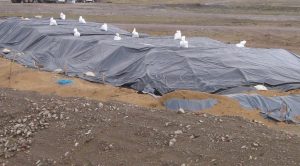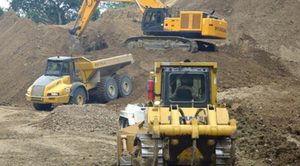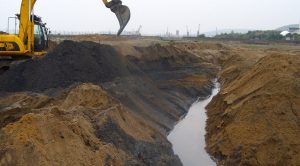SOIL REMEDIATION
Bioremediation is a proven technology that can be used for the remediation of soil and groundwater contaminated with hydrocarbons or nitrates.
The biological treatment uses microorganisms or enzymes to destroy or transform hazardous organic contaminants into environmentally benign by-products. The technology utilised in bioremediation is based upon speeding up attenuation processes that can occur naturally in the ground. Treatment can be either in situ or ex situ and each method has pros and cons. Ex situ bioremediation involves excavation of contaminated material and treatment in a specially designed treatment area. The material is regularly agitated by machine which speeds up the treatment process.
In situ bioremediation is less disruptive and treats the soil and groundwater in place; this method normally utilises specially drilled wells or injection points to introduce air into the ground to increase the concentration of oxygen in the soils to enhance aerobic bacteria growth and contaminant degradation. The treatment may take longer than ex situ treatment of soil but can be speeded up by the introduction of microroganisms and nutrients into the ground. The choice of bioremediation method depends on many factors and GeoEnvironmental Applications are able to advise on the most appropriate method for a given site and contamination issue.




